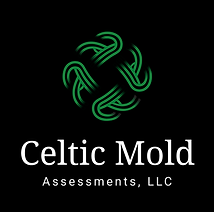About Mold
-
Mold can begin to grow in the first 24-48 hours after water damage.
-
Molds produce allergens (substances that can cause allergic reactions) and irritants. Inhaling or touching mold or mold spores may cause allergic reactions in sensitive individuals.
-
Symptoms of mold sensitivity
-
sneezing
-
nasal congestion
-
runny nose
-
skin rash
-
itching
-
watery eyes
-
asthma
-
chest tightness
-
-
Mold will grow in places with a lot of moisture, such as around leaks in roofs, windows, or pipes, or where there has been flooding. Mold grows well on paper products, cardboard, ceiling tiles, and wood products. Mold can also grow in dust, paints, wallpaper, insulation, drywall, carpet, fabric, and upholstery.
-
Bleach does not kill mold.

Some General Information
It is now illegal for any individual or company to financially benefit from or provide services on both sides of mold projects. This means that if an individual or company conducts the mold inspection they can't also provide the remediation; and if an individual or company provides the remediation services they can't also be the ones that provided the inspection service.
Sometimes a remediation company will offer to come and do air quality testing or other sampling when an inspection by a NYS Licensed Mold Assessor hasn't been done. They do this to confirm mold is in the structure and sell the job. You should never do this, testing/sampling of any kind is often times not necessary when mold growth is visible and unless they're a NYS Licensed Mold Assessor conducting an assessment they are not the one to say whether or not professional remediation is needed. Always obtain an assessment report from a NYS Licensed Mold Assessor prior to doing any abatement/remediation. NYS DOL Article 32 was put in place to protect homeowners by requiring two separate entities to be involved on either end of the project. It's a way of ensuring everyone is being honest and forthcoming in the work they are providing for consumer protection purposes.
With Celtic Mold Assessments we can inspect affected areas, locate the source (cause) of the mold growth and put together a comprehensive report including a remediation plan and other repair recommendations. Then after the remediation has been done, go back to provide a clearance inspection where we verify the remediation company did their part in getting rid of the mold in the correct manner.

